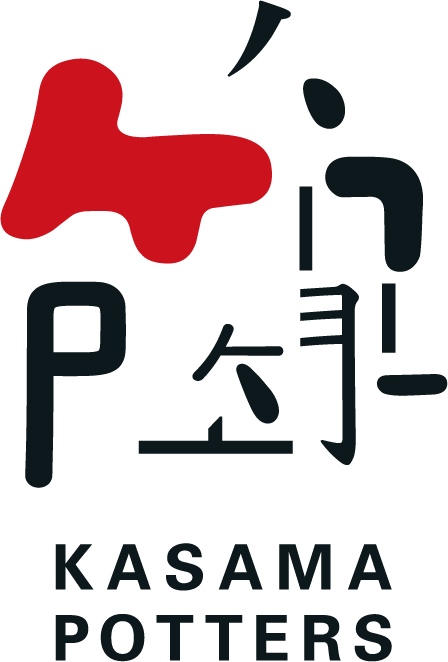Places to Visit in Kasama
With Japan now open again to international visitors, it is possible again to travel to Kasama. Here we introduce some classic things to see, and sites with a special resonance to Kasama Potters.
Those who make the trip to Kasama will find a low rise, widely spread settlement, enveloped by nature. The town is traditionally centred on the area around the nationally famous Inari Shrine, with a more recent centre of cultural activity to the west within the so called art forest park.
Modern day Kasama is the product of a merger of several settlements in 2006, including the populous Tomobe area now the administrative district, Iwama an area famous for the practice of Aikido, and Inada, to the east where granite stone is quarried in one of the town’s main industries.
For visitors with a focus on ceramics, the area around Kasama station, with easy access to galleries and museums - will likely be the main port of call. Timed together with one of the three main ceramics festivals in the year, the town population will be swelled with domestic visitors, adding to the normal traffic to the popular golf courses, and the three million annually who take in the Inari Shrine.
There are access routes by road, rail and from the regional airport in Ibaraki. A daily bus from Akihabara in Tokyo runs to Kasama taking around 1 hour 50 minutes. Alternatively the Tokiwa express train runs from Tokyo station, taking around 1 hour 10 minutes. By car, it is around an hour and a half from the capital.
While Kasama stands out for attractions for the visitor, it is known more generally for it liveability as a settlement. A humane hinterland to the metropolis, many have gravitated to Kasama for it peaceful rhythms.
1. Geijutsu no Mori / Art Forest Park
Many of Kasama’s cultural facilities are situated in the large ‘geijutsu no mori’ (‘art forest’) area of park land. This landscaped hillside expanse of greenery, is refreshing for a walk and contains enclaves including one of Japan’s largest skate parks, and a play space for children. In late April and early May, it hosts the Himatsuri ceramics festival which stretches across a large site. One corner of the park is the site of Kasama ceramic university, placing the students at the heart of the town’s nature filled cultural quarter.
2. Craft Hills
At the centre of the art forest park is a collection of specially constructed buildings devoted to ceramics and craft in Kasama. Around a central court yard there are spaces devoted to practicing ceramics, and viewing work, including by nationally recognised potter Kōsei Matsui. Not to mention also a ceramic outlet and terrace cafe. This serves not just tasty curry, but Mont Blanc desserts made with Kasama sourced chestnuts. Craft Hills is also the main location of the ceramic festivals that take place in Kasama in January, and in the Autumn.
http://www.kasama-crafthills.co.jp
3. Ibaraki Ceramic Art Museum
Opened in 2000, the Ibaraki Ceramic Art Museum also stands near the park’s central plaza. It is a place to investigate both the history and tradition of Kasama ware, and collections of wider national and international work. Part of the museum’s role is to provide permanent inspiration to Kasama’s ceramic community, and it houses pieces by important figures. This include Ibaraki’s own Hazan Itaya, and Kōsei Matsui, together with renowned postwar Japanese potters such as Kenkichi Tomimoto, Shoji Hamada and Toyozo Arakawa. It hosts regular exhibitions too, including in the past by Lucie Rie, Emile Galle, and Josiah Wedgwood. The museum shop, as well as occasional special exhibitions, includes work by Kasama Potters too, such as Mishio Suzuki. Pieces by Shuji Haneishi, Michitaka Fukuno and others are included in the Museum’s permanent collection. (The Director of the museum Kenji Kaneko, previously discussed with us his perspective on ceramics in Kasama).
https://www.tougei.museum.ibk.ed.jp
4. Kasama Inari Shrine
For centuries much of Kasama’s national fame has rested on the Inari shrine at its centre. The precise origins of Inari worship are debated within Japanese religion, but the kami (god) associated with fecundity and success is one of the most commonly sanctified in Shinto, and sometimes Buddhism too. Kasama’s Inari shrine is classed one of the ‘three big ones’ in Japan. (Together with Geta in Miyagi, and famous Fushimi Inari in Kyoto. Its initial construction is dated to the 7th century, but with some uncertainty. The wisteria in the central courtyard is thought to be around 400 years old, and its annual bloom is just one reason that more than 3.5 million people visit the shrine each year.
5. Gallery Road
At the base of the Art Forest park is a bending road with a self-explanatory name. The galleries that line it are a permanent place to find Kasama ceramics. These include galleries such as Sarasa and Space Nico that host exhibitions by established and up and coming Kasama ceramicists. One of the largest is Gallery Mon, which is organised around a central garden which is almost as attractive to look at as the ceramic displays that line it. A stop at Mon is an effective way to check the pulse of current Kasama ceramics. At the base of Gallery Road is the workshop and outlet of Kozan-gama, one of town’s largest ceramic businesses, founded by Koji Masubuchi. Further along the main road are similar spaces owned by Hiroshi Otsu and Yukikatsu Isobe.
6. Kasama no Ie (House in Kasama)
Originally the home and workshop of the ceramicist Hideto Satonaka, Kasama no Ie was designed by the leading Japanese architect Toyo Ito. It was completed in 1981 and Satonaka remained there until his death in 1989. The building now functions as an exhibition space, shop, cafe and co-working space. It is open to the public with no admission fee on most days (although it closes on Mondays, and is sometimes rented for events.).


